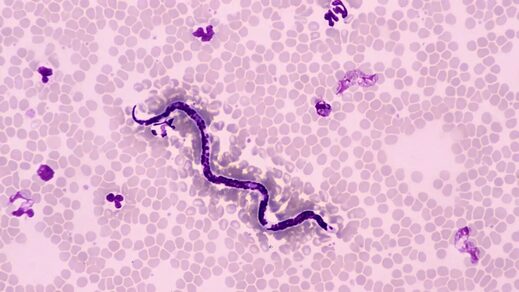Amalyah Hart
Cosmos
Fri, 22 Apr 2022 12:00 UTC

© Ed Reschke/Getty Images
This particular worm is a dog-heart worm, but similar parasitic worms are found in the intestines of humans, spreading via faecal matter or undercooked food.
Analysis of skeletons bridging the Roman to the Victorian eras show ancients (unsurprisingly) carried parasitic stomach bugs, but patterns changed with the advent of sanitation.
It may come as no surprise to you that ancient humans played host to a smorgasbord of bugs and diseases, but science, as a rule, likes to tease out the details in the data.
So, in that spirit of curiosity, researchers from the University of Oxford have investigated the history of
parasitic worm infections in Britons who lived between the Roman and Victorian eras - and the results aren't pretty.
Humans are infected with roundworms and whipworms through contact with contaminated faecal matter. In a society with poor hygiene practices, then, these nefarious critters can thrive on a virtual parade of poop that spreads, in tiny increments, from person to person. Other parasitic infections, like tapeworm, can come from eating undercooked meat or fish.
To test the prevalence of these infections over time, the research team
analysed 464 human burials from 17 sites, dating from the Bronze Age to the Industrial Revolution. To identify the trace presence of parasitic worms in these long-degraded burials, the researchers hunted for worm eggs in the soil near the pelvises of the skeletons.
According to the results of the
study, published today in
PLOS Neglected Tropical Diseases, people in the Roman and Late Medieval periods fared the worst, with the highest rates of parasitic worm infections of the time period studied. But, as the Industrial period dawned, worm infection rates - while still high - began to show spatial patterns of variation.
Some sites showed scarce evidence of parasitic eggs, while in others these orbs of intestinal doom were rampant. The researchers believe these patterns are linked to changes in sanitation and hygiene in some areas, during what's known as the Victorian "Sanitary Revolution".
"Defining the patterns of infection with intestinal worms can help us to understand the health, diet and habits of past populations," write the authors. "More than that, defining the factors that led to changes in infection levels (without modern drugs) can provide support for approaches to control these infections in modern populations."
Next, the team plan to use their array of parasite-based approaches to investigate other infections in the past, including larger-scale analyses.
Amalyah Hart is a science journalist based in Melbourne. She has a BA (Hons) in Archaeology and Anthropology from the University of Oxford and an MA in Journalism from the University of Melbourne.

